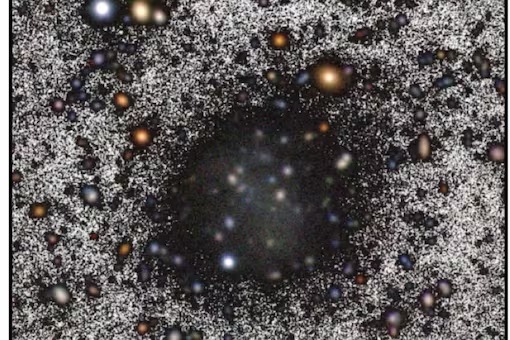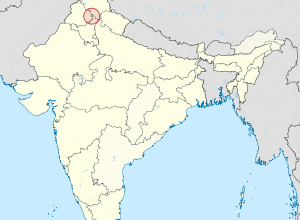Scientists Perplexed By ‘Almost Invisible’ Dwarf Galaxy Name Suggested By 5-Year-Old Girl
A bewildering discovery has been found by scientists amid the vastness of the cosmos. They have discovered Nube, a nearly undetectable dwarf galaxy that defies conventional wisdom on such cosmic objects. Because of this cosmic entity’s peculiar features, which defy accepted cosmological theories, scientists are baffled by it.

The results were published in the journal Astronomy & Astrophysics. The discovery was made by an international research team that included scientists from the University of La Laguna (ULL), the Instituto de Astrofísica de Canarias (IAC), and other institutions. Nube, which means “cloud” in Spanish, has captured the attention of many with its ethereal beauty and distinctive qualities. Remarkably, one of the researchers’ five-year-old kids came up with the name Nube.
Because of its very weak surface brightness, Nube has escaped identification in earlier sky surveys, seeming to be a ghostly apparition in the vastness of space. Because its stars are spread across such a large area, conventional observing techniques have not been able to fully capture its presence up to this point.
Nube, a recently discovered galaxy, is estimated by scientists to be ten times fainter and ten times longer than other dwarf galaxies of its kind, defying conventions in galactic categorization. Nube is barely one-third the size of the Milky Way, yet it has a mass similar to the Small Magellanic Cloud.
“With our present knowledge, we do not understand how a galaxy with such extreme characteristics can exist,” said Mireia Montes, the study’s principal author and a researcher at IAC and ULL, expressing her confusion at Nube’s existence.
Co-author Ignacio Trujillo said that the discovery was made by carefully examining sky photographs from programs such as Legado del IAC Stripe 82. Ultra-deep multicolor images from the Gran Telescopio Canarias (GTC) were then used to corroborate the findings. Nube’s precise distance is still unknown despite these attempts; estimates put it at a distance of around 300 million light-years.
To further explore Nube, further observations with cutting-edge telescopes like the William Herschel Telescope (WHT) and the Very Large Array (VLA) are under progress. “Even if the galaxy turns out to be closer, it will still be a very strange object and present significant challenges to astrophysics,” said Trujillo.
Beyond the Nube’s dim brilliance lies its unusual character. Nube defies accepted hypotheses based on the cold dark matter concept since it displays a consistent density across its structure, in contrast to the usual dispersion of stars within galaxies.
As Montes noted, “We have not been able to observe it well until we had the ultra-deep images from the GTC. The object is so faint because the density of stars varies very little throughout it.”
The puzzling features of Nube provide a serious challenge to cosmologists, as current theoretical frameworks are unable to explain its existence. Montes hinted at the potential of very small-mass particles by suggesting that Nube’s oddities may indicate a divergence from accepted theories of dark matter.
It would be one of the most exquisite displays of nature, connecting the worlds of the tiniest and greatest, if Trujillo’s notion is verified.







